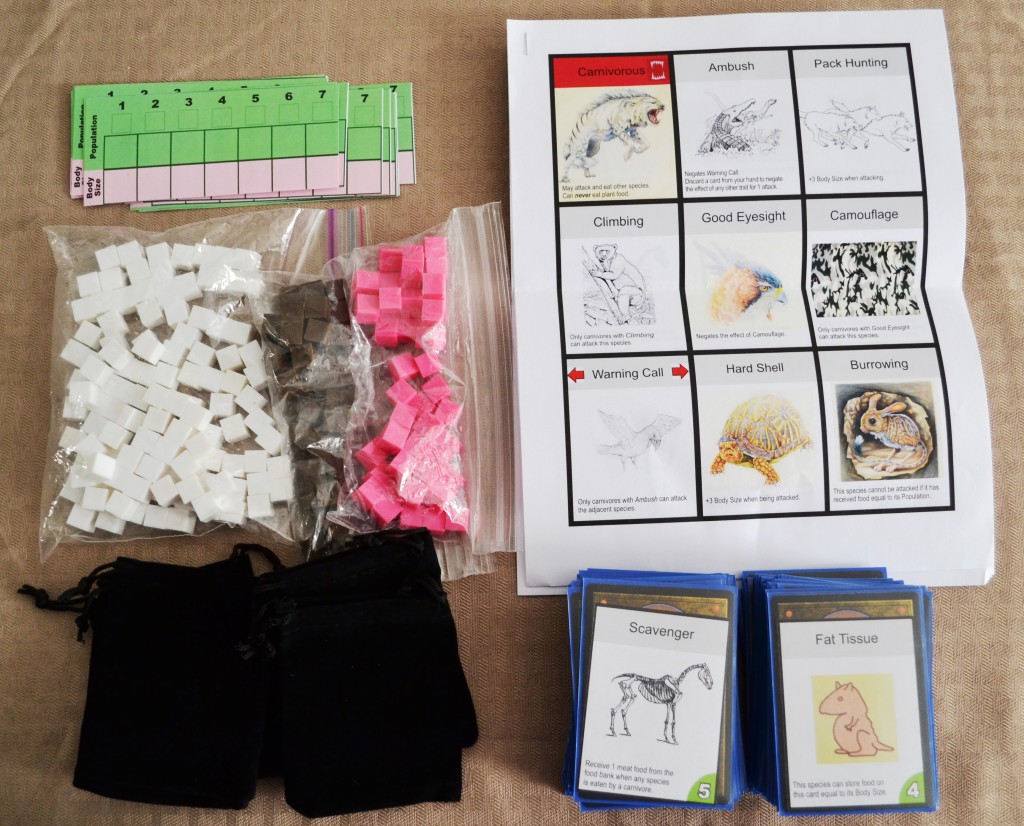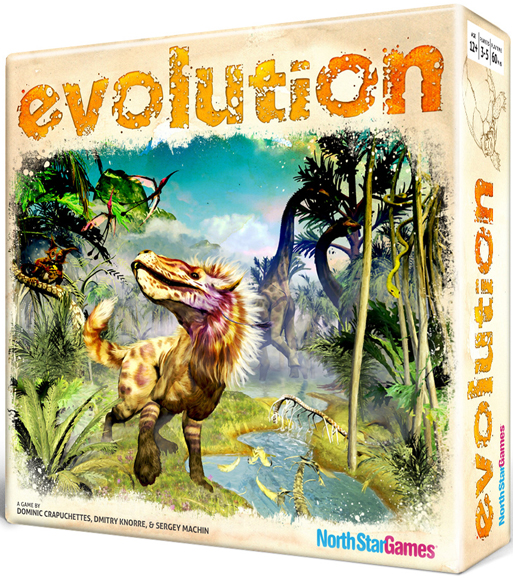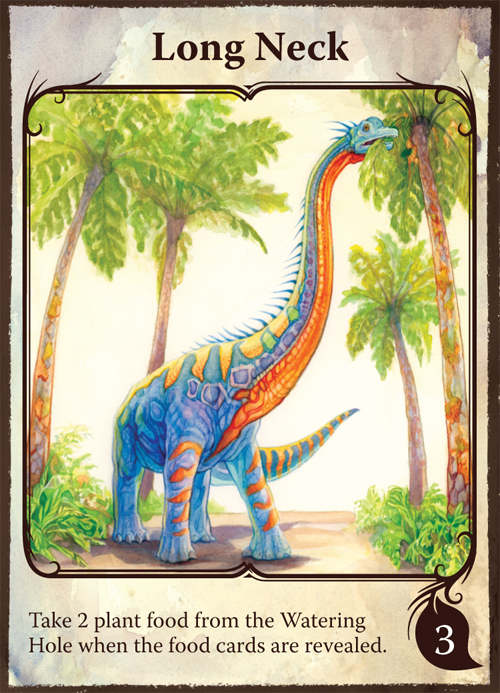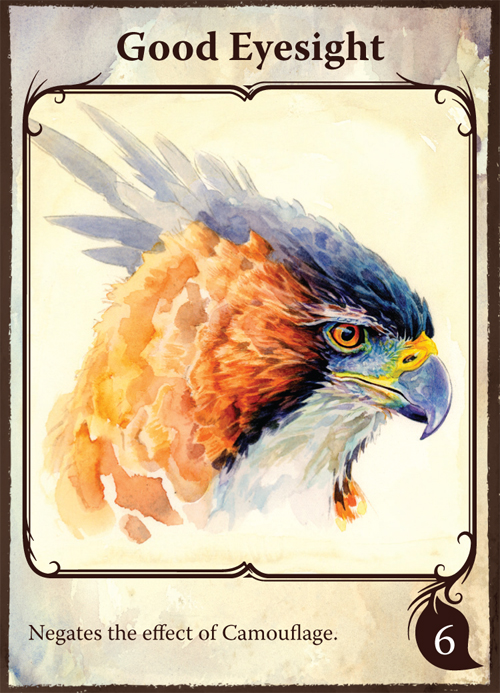I was a bit surprised, in all honesty, to see “Evolution” cross my path. Not because of its name or the gameplay mechanics mind you, but due to the fact that it was created by the same folks who made “Say Anything“, “Wits & Wagers“, “Clubs“, and “Crappy Birthday“…all of which are fairly casual family/party games. “Evolution”, a game currently seeking your support on Kickstarter, breaks the mold and instead goes the strategic route. While still being a relatively family-friendly game at heart, it’ll force players to make some pretty tough choices. Before we get into the nitty-gritty details, I’d like to thank Ryan Metzler, a representative for North Star Games, for reaching out and providing me with a press copy. It’s important to stress that prototypes are not often representative of the final product, making everything featured in this article subject to change.
My press copy came with species boards & tracker cubes, bags, plant & meat food, and a deck of cards. Each species board was the same in that it had a separate “Size” and “Population” track, both of which will help players see at a glance how well their species are doing. Size determines how well they’ll fare in combat while population tracks the actual count…species with a population of zero, as a result, go extinct. Cards have a few different uses (which I’ll explain later), but they can be used to both determine the amount of plant food available on any particular round as well as to help compliment a species with their listed traits. Each card lists both a plant food value AND a trait, so it’s up to players to decide what they’ll do with them.
While the game does take about forty-five minutes to an hour to play, rounds go by pretty quickly. The length of time a game takes honestly depends on how long the players spend thinking about their choices. A quick-play option is included in the manual to help speed things along if you’re pressed for time. As for gameplay itself, the game is broken up into rounds, each of which have four phases: 1) Deal the Cards, 2) Select Food for the Round, 3) Play Cards, and 4) Feed the Species. The role of the active player will rotate clockwise around the table as the game progresses.
Phases one and two are fairly simple and take no time at all to complete. The former phase tasks the active player with dealing three cards to each player, plus one for every species they have in front of them. The latter of the two phases will make everyone choose one card from their hand to place face down onto the center of the table. These will be the plant food cards for the round, to be flipped over and resolved later during phase four. Since each card has a different food value along with a listed trait, players may need to stop and think about the traits with which they’d be willing to part.
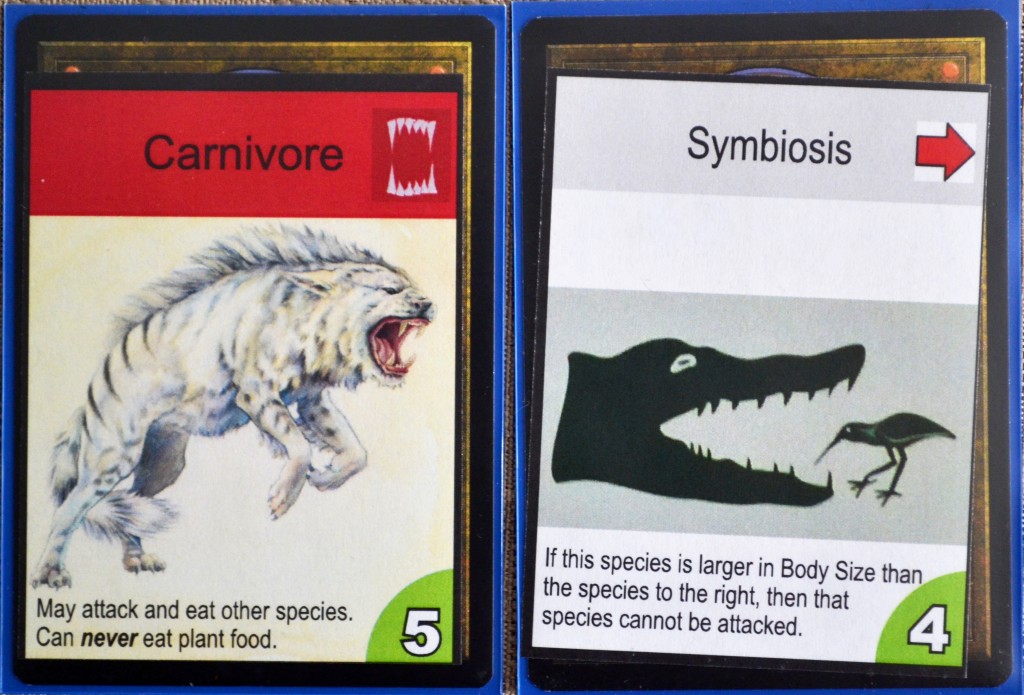
Players will need to pay attention to what kind of cards they attach to their species during the third phase.
Phase three is a bit more complex but not overly so. The active player will begin by playing as many traits as they’d like from their hand and attach them (face down) to a species. A species can’t have more than three traits, nor can they have duplicate traits. A player can choose to discard an existing trait however to make room for a trait that they really like. Alternatively, a player can discard a card by playing it face up in the discard pile, allowing him or her to do one of two things. They can create a new species (with a size and population of “1”) or choose to increase the size or population (not both) of an existing species by “1”. Once the active player is done, the next player does the same. The aforementioned quick-play variant can be observed here in that everyone can go at the same time. Once everyone is finished, the trait cards played on a species are flipped face up.
Phase four involves feeding your species in order to keep them alive. The food cards chosen from phase two are revealed and the numbers summed, the result of which is how much plant food is available for this round (place that many plant food cubes in the middle of the table). The cards are simply discarded. Starting with the active player going clockwise, each player will feed one of their species. This is where the game can get a little complex so I’ll opt to not recite the manual word for word, but suffice it to say that this phase can often result in game changing conditions! As species grow, for example, so do their food requirements. A species needs one food for each population, making it tougher toward the middle/endgame to keep multiple species up and surviving.
Rounds continue until the deck runs out during these phases, which in most cases, classify that round as the last. Players proceed to score themselves points: one point for each food in their bag (leftovers or unused food from previous rounds), one point for each trait on a surviving species, and points equal to each species’ population count. Whoever has the most, wins the game!
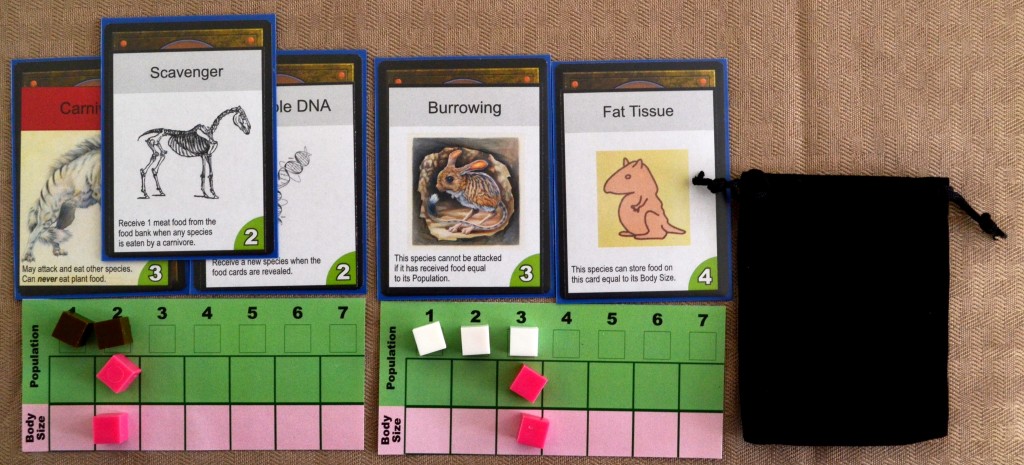
Creating too many species and growing them too quickly can spell disaster when food reserves are limited.
One of the things I enjoyed about “Evolution” was the inclusion of herbivores and carnivores. Newly formed species can eat both plant food and meat, but traits can change their dietary habits as well as how much food they require/gain from round to round during feeding. Carnivores can attack other species on the table (even those belonging to an opponent), which is how they gain meat tokens to feed their species. This is, of course, assuming they are larger in size and can defeat whatever defensive traits the defending player might have. Raising an army of carnivores can be devastating to other players, but if they end up being able to defend against your advances, you’ll have no choice but to feed on your own species (thereby reducing their population).
Along those same lines, the traits are really what makes the game so appealing. I mentioned earlier that this game will force the player to make a lot of choices…these traits are most certainly the culprit. Some traits are offensive, some traits are defensive, and some will straight out buff a species and give them special powers, so to speak. How you shape your species will ultimately determine what kind of role they’ll play in the game. To that end, I found “Evolution” to be both an engaging experience and a joy to play. It contains enough strategic gameplay to keep the thinkers engaged, but is casual enough to where non-gamers can jump in on the fun from time to time. While my ethics prevent me from reviewing a game not yet officially released to the public, I will say that this is one excellent idea that’s worth supporting.
—
You can learn more about and support “Evolution” by visiting the following websites:
https://www.kickstarter.com/projects/1923120194/evolution-0
http://www.boardgamegeek.com/boardgame/155703/evolution
http://northstargames.com/North_Star_Games/Home.html
—
—
Below are a few photos provided by the developers:

